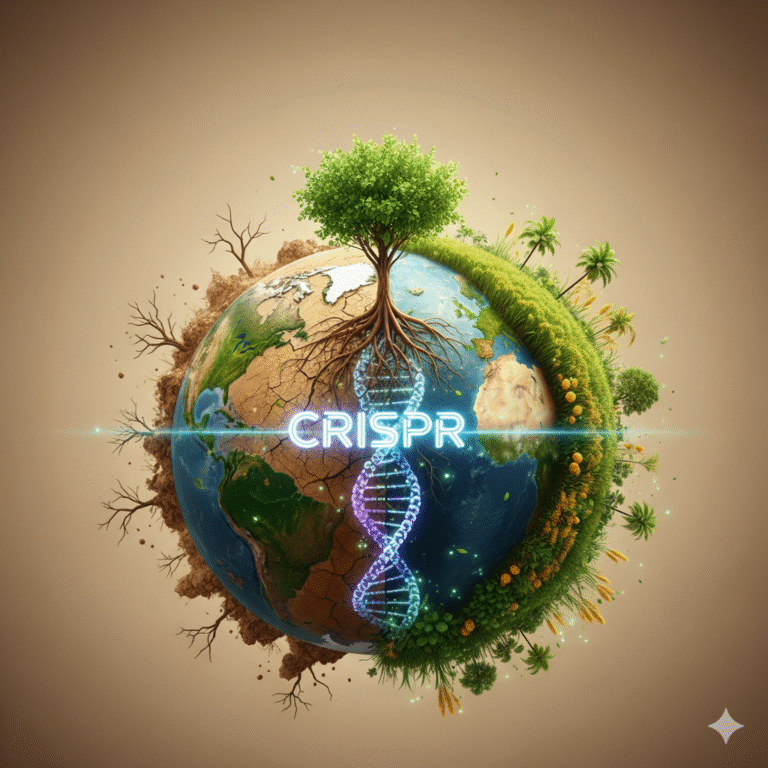Key Highlights
- Three cloud seeding trials in October 2025 produced no measurable rainfall despite aircraft releasing silver iodide over targeted zones, with cloud moisture at only 10-20% versus the 30-50% threshold needed for effectiveness
- IIT Delhi’s decade-long climatological study (2011-2021) identified only 92 viable days for cloud seeding during winter months, confirming Delhi’s atmosphere is fundamentally unsuitable for consistent operations due to moisture scarcity
- Cost outlay reached Rs 60 lakh per sortie (approximately $70,000), with total winter-season coverage estimated at Rs 25-30 crore—raising questions about resource allocation for a measure experts call “temporary and unsustainable”
- Even successful rainfall provides only 1-5 days of relief before pollution rebounds to pre-event levels, as emissions persist unabated; ozone concentrations often increase post-rainfall
- Silver iodide safety remains contested: while EPA studies suggest low toxicity at operational scales, cumulative environmental impacts and downwind effects require transparent monitoring and independent oversight
As winter’s choking smog descended upon India’s capital in late October 2025, authorities turned to an expensive emergency measure: cloud seeding. With PM2.5 levels exceeding 323—over 20 times the World Health Organization’s daily safety limit—Delhi’s government partnered with IIT Kanpur to induce artificial rain. The trials, conducted on October 23 and October 28, cost approximately $364,000 (around Rs 3.21 crore for five planned sorties) but delivered virtually no rainfall and minimal pollution relief. This expensive experiment has ignited crucial debates about scientific feasibility, governance accountability, and whether short-term weather modification can ever substitute for sustained emission controls.
The Perfect Storm: Why Delhi Became a Smog Chamber

Delhi’s winter air crisis stems from a deadly convergence of factors. Between October and February, cold air masses trap emissions from approximately 12 million vehicles, thousands of industries, construction dust, and seasonal agricultural fires in neighboring states. Temperature inversions—where warm air sits atop cooler ground-level air—create a lid that prevents pollutants from dispersing vertically. The result: 30 million residents breathe air classified as “hazardous” for weeks at a time. ui.adsabs.harvard
The public health toll is staggering. Research published in Lancet Planetary Health estimates 1.5 million pollution-related deaths occur annually across India, with Delhi experiencing approximately 15% of all fatalities attributable to particulate pollution—roughly 17,200 deaths in 2023 alone. Children’s lungs suffer irreversible damage, respiratory diseases spike, and cardiovascular hospitalizations surge. Previous interventions—vehicle restrictions through the odd-even scheme, smog towers costing crores, and water-mist spraying trucks—have all failed to deliver lasting improvements. pmc.ncbi.nlm.nih
Against this backdrop of desperation, cloud seeding emerged as what IIT Kanpur Director Manindra Agrawal candidly called an “SOS solution”—an emergency intervention when conventional measures fall short.
Cloud Seeding 101: The Science Behind Weather Modification
Cloud seeding is a weather modification technique that disperses particles—typically silver iodide (AgI) or salt—into clouds to accelerate droplet or ice-crystal formation, potentially triggering precipitation that can temporarily wash out airborne pollutants.
Hygroscopic seeding targets warm clouds using salt particles that attract water vapor, encouraging coalescence of droplets into rain-sized drops through enhanced collision and growth processes.
Glaciogenic seeding focuses on cold or mixed-phase clouds (typically below -5°C), introducing silver iodide particles whose crystalline structure mimics ice, providing nucleation sites for ice crystal formation that eventually grow heavy enough to fall as precipitation.
Silver iodide’s hexagonal crystal structure—remarkably similar to ice—makes it particularly effective at temperatures between -8°C and -5°C. However, recent research from Vienna University of Technology reveals that only the silver-terminated surface of AgI crystals effectively promotes ice nucleation; iodine-terminated surfaces rearrange into rectangular structures that lose the necessary symmetry.
The World Meteorological Organization (WMO) emphasizes that cloud seeding neither creates clouds nor generates moisture from nothing—it only enhances precipitation from existing moisture-laden systems under specific atmospheric conditions. Success depends critically on adequate cloud microphysics, sufficient moisture content (typically 30-50% humidity or higher), appropriate temperature profiles, and proper supersaturation levels.
Delhi’s October 2025 Trials: Anatomy of a Failed Experiment
On October 23 and twice on October 28, a Cessna aircraft departed from airfields in Kanpur and Meerut to release silver iodide-based flares over northwestern Delhi neighborhoods including Burari, North Karol Bagh, Mayur Vihar, Sadakpur, and Bhojpur. Each sortie released eight flares weighing approximately 0.5 kg each, dispersing seeding agents over roughly 300 square kilometers.
The meteorological conditions proved fatally inadequate. Cloud moisture measured only 10-15% during trials—far below the 30-50% threshold scientists consider necessary for meaningful precipitation response. IIT Kanpur’s Director Agrawal acknowledged, “Due to the low moisture content, the chances of inducing rain were very small, so we did not achieve success in that regard”.
The outcome: Not a single drop of measurable rainfall fell over Delhi, though trace drizzle was recorded in neighboring Noida and Greater Noida. Air quality monitoring stations recorded modest PM2.5 reductions of 6-10% and PM10 decreases of 14-21% following trials—improvements IIT Kanpur attributed to seeding effects, though atmospheric scientists cautioned that wind patterns, natural dispersion, and timing effects could explain these changes without invoking artificial intervention. nature
The day after the first trial, PM2.5 levels reached 323, underscoring both the severity of ambient pollution and the limits of weather modification as a control strategy. Delhi’s AQI remained firmly in the “very poor” category throughout the trial period, averaging 303 on November 1. aqicn
Cost implications have drawn scrutiny. Each sortie cost approximately Rs 60 lakh ($70,000), with the sanctioned budget of Rs 3.21 crore covering initial trials. If extended across the entire winter season with seeding attempts every 10 days when clouds appear, costs would balloon to Rs 25-30 crore—roughly 10% of Delhi’s annual pollution-control budget. Additional infrastructure expenses include aircraft modification (Rs 5.30 crore for equipment like flare racks, CCN counters, scanning mobility particle sizers, microwave radiometers, and radiosonde systems), plus pilot fees, crew charges, and insurance.
Climatological Reality Check: Why Delhi’s Winter Defeats Cloud Seeding

A comprehensive study by IIT Delhi’s Centre for Atmospheric Sciences, analyzing meteorological data from 2011-2021, delivered a sobering verdict: Delhi’s winter atmosphere is climatologically unsuitable for consistent and effective cloud seeding operations.
The fundamental constraint is moisture scarcity. Peak pollution months (December-January) coincide precisely with the driest atmospheric conditions. During these critical weeks when intervention is most desperately needed, Delhi’s atmosphere typically lacks the moisture depth, saturation, and vertical cloud development required for successful seeding.
Western Disturbances (WDs)—low-pressure systems originating from the Mediterranean region—are the primary drivers of winter precipitation in northwestern India. However, these systems are rare and unpredictable during Delhi’s pollution season. While WDs do bring occasional cloud cover and rainfall, they account for only about 15% of Delhi’s annual precipitation. The IIT Delhi study found just 137 rainfall events during winter months across the decade, with 112 attributable to Western Disturbances.
Most critically, viable “windows of opportunity” for seeding are extraordinarily limited. Over the 10-year study period (2011-2021), researchers identified only 92 days when moisture and cloud conditions were comparable to naturally occurring moderate-to-heavy rainfall—conditions theoretically suitable for cloud seeding enhancement. That averages fewer than 10 suitable days per winter season across a sprawling metropolitan region of 30 million residents.
Even on days initially flagged as “potentially promising”—such as cloudy WD days without active precipitation—a multi-criteria Moisture Suitability Index (MSI) revealed these conditions frequently lacked the necessary combination of moisture depth, saturation, and atmospheric lift for successful seeding. As IIT Delhi’s study concluded, “practical utility as a consistent and reliable air-quality intervention is constrained”.
Climate change further complicates the picture. Research indicates Western Disturbances are becoming increasingly infrequent and erratic, potentially narrowing the already slim operational window.
The Washout Myth: Why Even Real Rain Doesn’t Fix Delhi’s Air
A crucial finding from the IIT Delhi analysis: even when natural rainfall successfully washes out pollutants, the benefits are fleeting.
Heavy rainfall (defined as >20mm) does effectively reduce PM2.5 and PM10 concentrations by 80-95%, along with significant removal of nitrogen oxides (NOx) through a process called wet deposition or “washout”. Light rain (under 5mm), by contrast, offers minimal impact—often reducing particulate levels by only 10-30%.
But the relief is temporary. Air quality improvements typically last only 1-5 days before pollutant concentrations rebound to pre-rainfall levels. The reason is straightforward: emissions never stop. Vehicles continue driving, industries keep operating, construction dust re-enters the atmosphere, and crop stubble burning resumes. Without addressing these persistent sources, pollution simply reaccumulates once the atmospheric cleansing effect dissipates.
Paradoxically, ozone (O₃) concentrations often increase post-rainfall. This occurs because rainfall removes nitrogen oxides that normally react with and consume ozone, temporarily reducing the chemical “sink” for this secondary pollutant.
Environmental activist Bhavreen Kandhari noted that during the October 28 trials, Delhi’s atmosphere already contained moisture from a natural Western Disturbance—raising questions about whether the observed rainfall in neighboring areas would have occurred regardless of seeding intervention.
Silver Iodide: Assessing the Environmental and Health Footprint
Is silver iodide safe? The scientific consensus suggests low risk at current operational scales, but uncertainties remain about cumulative impacts and large-scale deployments.
The safety case: Published literature generally shows no significant environmental harm from silver iodide at typical cloud-seeding concentrations. The U.S. Environmental Protection Agency conducted an exposure and risk assessment concluding that silver released in precipitation from cloud seeding “is not expected to contribute significant amounts to water”. Studies in Florida found seeded clouds yielded precipitation with average silver concentrations of 0.13 parts per billion (ppb) versus 0.07 ppb for unseeded clouds—both well below the EPA secondary maximum contaminant level (SMCL) of 100 ppb for drinking water. Research in Australia’s Snowy Mountains determined that cloud seeding’s contribution to silver accumulation in alpine lake sediments was negligible. Greek scientists analyzing 2,500 soil samples, water bodies, plants, and ecological systems following extensive cloud seeding operations found no harmful effects. weathermod.org
The Weather Modification Association’s 2009 position statement affirmed: “Silver iodide is environmentally safe as it is currently being dispensed during cloud seeding programs”.
The caution flags: The EPA has not classified silver as to human carcinogenicity, acknowledging limited studies and uncertainty in wider-use scenarios. A 2016 study published in Ecotoxicology and Environmental Safety found that while soil organisms like Caenorhabditis elegans showed no adverse effects from silver iodide exposure, soil bacteria experienced moderate declines in cell viability, and freshwater organisms (cyanobacteria and algae) displayed heightened sensitivity. At the reference monitoring level of 0.43 μM AgI, researchers observed significant reductions in photosynthetic activity, particularly affecting respiration (60% inhibition) and photosynthesis (40%) in phytoplankton strains. The study warned that “cumulative impact of AgI could potentially affect both terrestrial and aquatic life forms” if cloud seeding is consistently conducted in the same locale, leading to substantial accumulation.
Under the U.S. Clean Water Act, silver iodide is classified as a hazardous substance and priority pollutant. While operational concentrations remain far below toxic thresholds, the principle of precaution suggests transparent monitoring, downwind effect studies, and independent environmental assessments should accompany any large-scale or long-term cloud seeding programs.
Governance Gaps: Who Approved an Unviable Project?
The Delhi cloud seeding initiative raises troubling questions about decision-making processes and scientific accountability.
Expert warnings were ignored. In 2024, both the India Meteorological Department (IMD) and the Commission for Air Quality Management (CAQM) advised the Delhi government in writing that cloud seeding was not feasible during winter, citing insufficient moisture and saturation during peak pollution months. The Ministry of Environment had similarly indicated the process would be ineffective in Delhi’s cold, dry winter conditions, stating that “cloud seeding requires specific cloud types which are absent during Delhi’s cold dry winter”.
Yet in 2025, the government proceeded with an estimated Rs 34 crore multi-phase project. When questioned about the discrepancy, Delhi government officials stated the initiative remains “experimental” and suggested different categories of cloud seeding might have different feasibility profiles—though the specifics were not clarified. IIT Kanpur is conducting a detailed technical assessment, with project continuation contingent on expert evaluation.
WMO best practices demand rigorous evaluation protocols. These include:
- Randomization: Only some suitable events should be treated to enable statistical comparison between seeded and unseeded conditions
- Objective event criteria: Pre-defined atmospheric thresholds to avoid subjective selection bias
- Primary statistical analysis: Quantitative impact assessment with confidence intervals comparing treatment and control groups
- Secondary physical validation: Observational evidence and high-resolution numerical modeling to validate the seeding hypothesis
- Site suitability documentation: Preliminary studies verifying climatology, cloud types, and modification potential before operational deployment
- Independent advisory oversight: Detached experts reviewing project design, implementation, and results to minimize bias
Delhi’s trials lacked several of these safeguards. The absence of randomization (all identified opportunities were seeded), limited baseline feasibility documentation, and reliance on post-hoc attribution of small PM reductions without controlling for confounding meteorological variables all undermine confidence in reported outcomes.
Public accountability requires transparency. Citizens and policymakers need access to full meteorological datasets, seeding operation logs, detailed air quality outcomes with uncertainty analysis, and independent third-party audits. Without these elements, expensive experimental programs risk becoming exercises in optics rather than evidence-based interventions.
Global Lessons: Where Cloud Seeding Works—and Why Delhi Is Different
Cloud seeding has been deployed in over 50 countries for various purposes, including precipitation enhancement, hail suppression, fog dispersal, and event-based weather management. However, efficacy is highly context-dependent and strongest for certain cloud systems.
Successful applications typically target orographic (mountain-induced) winter storms with supercooled liquid water and clear updraft structures. Research in Wyoming’s Sierra Madre Range demonstrated that radar-detected ice crystal production from seeding could be tracked and quantified under ideal conditions. The U.S. state of Utah runs operational enhancement programs with estimated 10.9% precipitation increases during active seeding periods. Canada’s Alberta province spends $4 million annually on cloud seeding for hail suppression to protect agricultural interests.
China’s 2008 Beijing Olympics provides the most famous precedent for pollution-related weather modification. On August 8, 2008, authorities fired 1,104 rain dispersal rockets from 21 sites to prevent predicted rainfall from dampening the opening ceremony at the open-air Bird’s Nest Stadium. The operation—the largest rain dispersal effort in China and first for an Olympic event—successfully intercepted a rain band moving toward the venue. However, this was an event-based, targeted intervention for a single day, not a sustained pollution-control strategy. Scientists analyzed radar and rainfall data to assess effects on convective clouds, finding that seeding at strategic sites could mitigate immediate precipitation within 5-10 minutes while enhancing downwind precipitation 10-20 minutes later. Critically, Beijing’s approach aimed to relocate rainfall timing and location, not to address chronic air quality through repeated atmospheric cleansing.
The key difference for Delhi: Beijing’s operation exploited favorable cloud systems with adequate moisture moving through the region during monsoon season. Delhi’s winter lacks comparable atmospheric resources. As atmospheric scientist Shahzad Gani of IIT Delhi emphasized, “In the winter season, the weather in Delhi is typically very dry, with very little moisture in the air. The only time it rains is when a western disturbance influences the plains”. When those rare moisture-bearing systems do arrive, natural rainfall often occurs regardless of seeding intervention.
The lesson from international experience: cloud seeding can nudge precipitation in favorable atmospheric conditions, but it cannot manufacture rain from dry air or substitute for emission reduction in addressing chronic pollution.
Policy Framework: When (If Ever) Should Delhi Seed Clouds?
Given the scientific constraints and operational costs, under what circumstances—if any—does cloud seeding merit consideration for Delhi’s air quality management? A evidence-based decision framework requires multiple safeguards:
1. Strict Preconditions for Deployment
Proceed only when forecasted atmospheric conditions meet minimum viability thresholds:
- Cloud moisture content ≥30-50% (preferably higher)
- Presence of supercooled liquid water in clouds
- Western Disturbance within range bringing adequate moisture depth and saturation
- Atmospheric lift mechanisms supporting cloud development
- Temperature profiles suitable for ice nucleation (-8°C to -5°C optimal for silver iodide)
Do not deploy under dry stratiform conditions where failure is predictable and resources wasted.
2. Transparent Timing and Opportunity Windows
Align operations to rare Western Disturbance events that meet moisture criteria. Accept that opportunities will be limited—perhaps 8-10 days per winter season based on historical climatology. Establish pre-declared go/no-go criteria based on objective meteorological forecasts rather than political pressure or symbolic gestures.
3. Realistic Cost-Benefit Assessment
Treat seeding as an emergency, short-duration measure, not a structural solution. With per-sortie costs of Rs 60 lakh and winter-season expenses potentially reaching Rs 25-30 crore, resources might achieve greater public health benefits if redirected toward:
- Vehicular emission controls and Euro VI fuel standards enforcement
- Industrial scrubber installation and compliance monitoring
- Crop residue management subsidies for farmers to prevent stubble burning
- Public transit expansion and electric vehicle infrastructure
- Real-time air quality monitoring network expansion
As Anumita Roychowdhury of the Centre for Science and Environment emphasized, “Addressing air quality requires tackling sector-specific emissions from transport, power and construction. Without that, no real impact can be achieved. Cosmetic measures may create short-term visibility benefits but are not sustainable solutions”.
4. Rigorous Evaluation Design
- Randomization: Designate some suitable events as unseeded controls for statistical comparison
- Objective selection: Pre-define event start criteria to eliminate selection bias
- Primary analysis: Quantify precipitation and air quality changes with confidence intervals, comparing seeded vs. unseeded events
- Secondary validation: Deploy high-resolution radar, aircraft instrumentation, and numerical modeling to test physical mechanisms
- Null hypothesis testing: Report results transparently even when seeding shows no effect or adverse outcomes
5. Environmental and Health Safeguards
- Pre-deployment environmental assessment for silver iodide or alternative seeding agents
- Downwind monitoring to detect unintended precipitation suppression or enhancement in neighboring regions
- Soil and water sampling in seeding zones to track silver accumulation over multiple seasons
- Independent review by atmospheric scientists, environmental toxicologists, and public health experts detached from implementation
6. Communication and Expectation Management
Set realistic public expectations. Communicate clearly that:
- Cloud seeding provides temporary washout, not lasting air quality improvement
- Pollution will rebound within days as emissions continue
- Success depends on rare atmospheric windows that cannot be controlled
- This is an emergency measure, not a substitute for emission controls
Publish full datasets and results, including failures, to build scientific credibility and public trust.
The Way Forward: Prioritizing Durable Solutions
The IIT Delhi study’s conclusion is unambiguous: “Cloud seeding cannot be recommended as a primary or reliable strategy for Delhi’s winter air pollution management. It should be viewed, at best, as a potential high-cost, emergency short-term measure, contingent on stringent forecasting criteria”.
Sustained emission reduction remains the only viable long-term solution. This requires:
Sectoral emission controls:
- Stricter vehicular emission standards with Euro VI fuel nationwide implementation
- Real-time industrial emission monitoring and penalty mechanisms for non-compliance
- Construction dust management protocols with water spraying and debris covering mandates
- Agricultural alternatives to stubble burning, including subsidized Happy Seeder machines and biomass aggregation systems
Regional airshed approach:
Delhi’s pollution cannot be solved in isolation. Coordinated action across National Capital Region states (Haryana, Punjab, Uttar Pradesh, Rajasthan) is essential, addressing transport corridors, power plants, and agricultural practices that collectively contribute to the capital’s toxic airshed.
Enforcement and compliance:
Existing regulations often go unenforced. Strengthening monitoring capacity, imposing meaningful penalties for violations, and ensuring judicial follow-through on pollution cases would leverage existing policy frameworks more effectively than experimental weather modification.
Public health infrastructure:
With 15% of Delhi’s deaths attributable to air pollution, investments in respiratory health services, vulnerable population protection (children, elderly, outdoor workers), and pollution-related illness treatment would address immediate suffering while long-term emission reductions take effect.
Conclusion: Science Over Symbolism
Delhi’s cloud seeding trials illuminate a broader tension between technological optimism and atmospheric reality. In a city choking on pollution, the impulse to “do something”—especially something visible and dramatic like weather modification—is understandable. But science demands we distinguish between interventions that work and those that merely provide political cover.
The evidence is clear: Delhi’s winter atmosphere is too dry, too stable, and too unpredictable for cloud seeding to serve as a reliable pollution-control tool. The Rs 3.21 crore spent on October’s failed trials might have funded thousands of subsidized cleaner cookstoves, hundreds of electric buses, or comprehensive air quality monitoring across the National Capital Region.
As IIT Kanpur’s Director Agrawal acknowledged, this is “an SOS solution… not a permanent solution. The permanent solution, of course, is to control the sources of pollution”. The question facing policymakers is stark: will Delhi invest in evidence-based emission reductions, or continue chasing expensive silver bullets that dissolve in the dry winter air?
Thirty million residents deserve better than experiments that defy climatological reality. They deserve clean air—not from the clouds, but from the political will to tackle pollution at its source.









+ There are no comments
Add yours